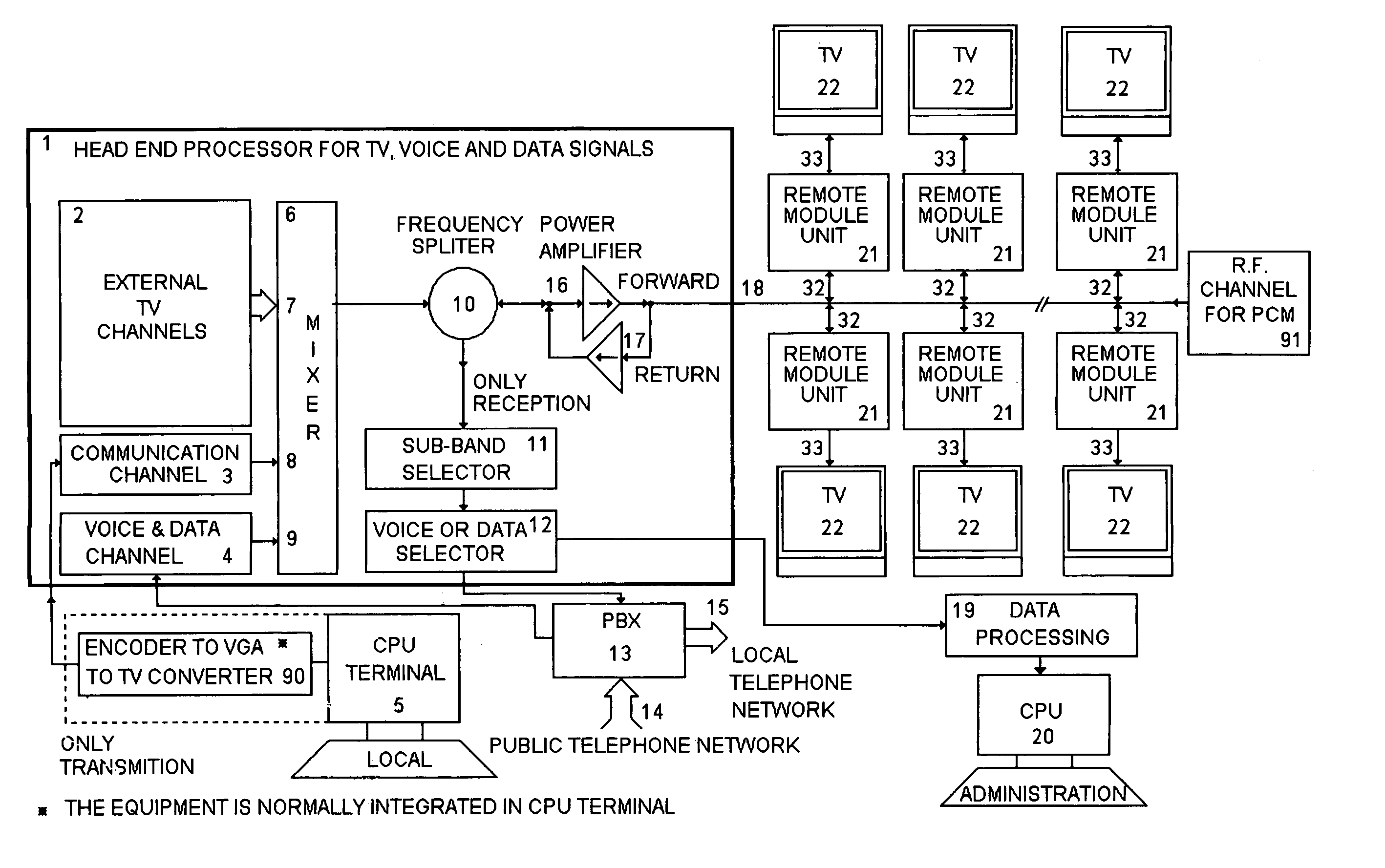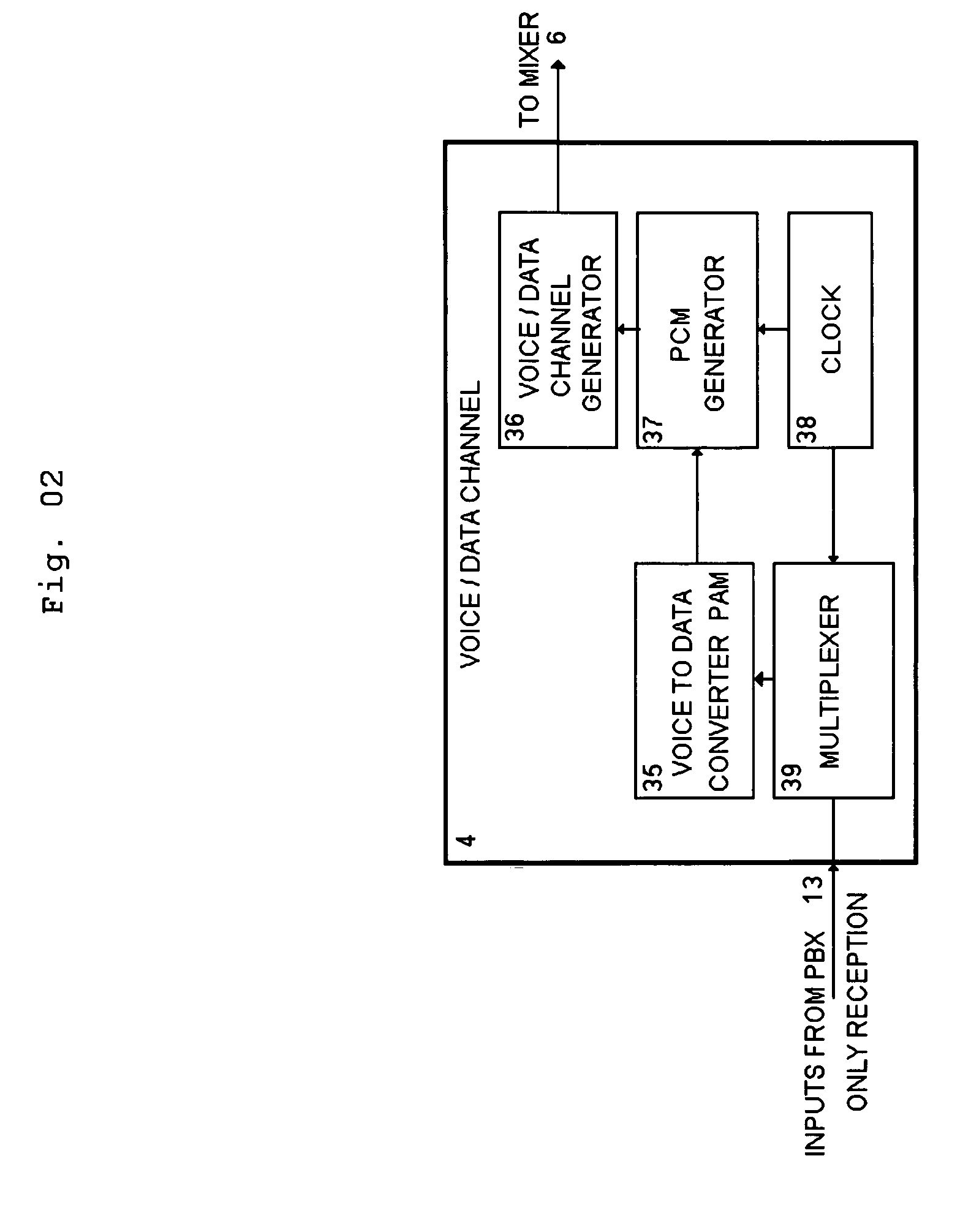System for bi-directional voice and data communications over a video distribution network
voice and data technology, applied in the field of bidirectional voice and data communications over a video distribution network, can solve the problems of loss of revenue, inability to justify the cost of retrofitting their buildings to accommodate these new technologies, and inability to install dedicated computer/communication lines at the time of construction, so as to achieve the effect of not adversely affecting the function of the structur
- Summary
- Abstract
- Description
- Claims
- Application Information
AI Technical Summary
Benefits of technology
Problems solved by technology
Method used
Image
Examples
Embodiment Construction
[0055]Referring to the drawings in detail, wherein like numerals denote identical elements throughout the several views, there is shown in FIG. 1 a schematic drawing that provides an overview of the components of a preferred embodiment of the instant invention. For purposes of specificity in the text that follows, the instant invention will be discussed as though it has been installed in a hotel using an existing coax cabling network. However, those skilled in the art will recognize that the invention disclosed herein might be used in many different settings including, but not limited to, homes, motels, hospitals, condominiums, town-houses, etc. Hotel operators, security companies, cable companies, and Internet service providers are just some of the many potential purchasers and users of the instant invention. Additionally, in the discussion that follows the instant invention will be described as though it were operating over a conventional coax television network, although the inve...
PUM
 Login to View More
Login to View More Abstract
Description
Claims
Application Information
 Login to View More
Login to View More - R&D
- Intellectual Property
- Life Sciences
- Materials
- Tech Scout
- Unparalleled Data Quality
- Higher Quality Content
- 60% Fewer Hallucinations
Browse by: Latest US Patents, China's latest patents, Technical Efficacy Thesaurus, Application Domain, Technology Topic, Popular Technical Reports.
© 2025 PatSnap. All rights reserved.Legal|Privacy policy|Modern Slavery Act Transparency Statement|Sitemap|About US| Contact US: help@patsnap.com



